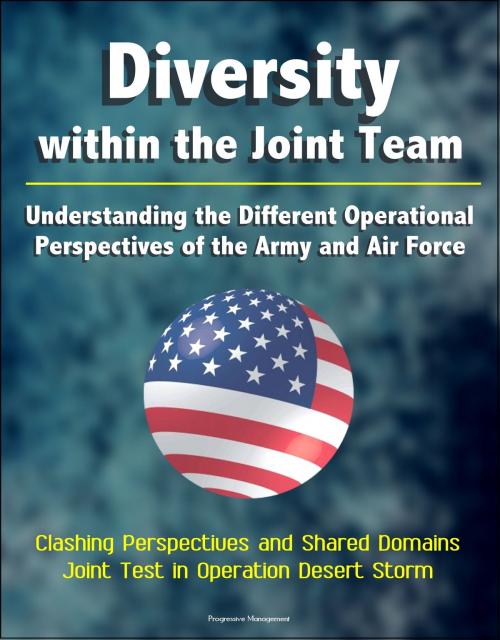Diversity within the Joint Team: Understanding the Different Operational Perspectives of the Army and Air Force, Clashing Perspectives and Shared Domains, Joint Test in Operation Desert Storm
Nonfiction, History, Military, Aviation, United States| Author: | Progressive Management | ISBN: | 9781301295234 |
| Publisher: | Progressive Management | Publication: | September 7, 2013 |
| Imprint: | Smashwords Edition | Language: | English |
| Author: | Progressive Management |
| ISBN: | 9781301295234 |
| Publisher: | Progressive Management |
| Publication: | September 7, 2013 |
| Imprint: | Smashwords Edition |
| Language: | English |
Proceeding from the means and ways they use to overcome the problems within their specific domains, the Army and Air Force have developed different operational perspectives. The differences would not matter if each conducted operations independently; however, to be effective on the modern battlefield, the two services must fight as one team. Unfortunately, the views of the two branches have been contentious from the beginning and have had a negative impact on the planning and conduct of joint operations. This monograph highlights the differences between the Army and the Air Force perspectives by focusing on five aspects of their individual views: space, objective, tactical actions, time, and dependency. Identifying and explaining the roots of these views, through the frames of history, theory, and doctrine, the study seeks to explain why the services believe, thus plan, and act in different ways. With shared understanding of the foundations of the two operational approaches, the joint planners are better equipped to rise above service parochialism and utilize the strengths and views of both forces in a joint team concept.
Proceeding from the means and ways they use to overcome the problems within their specific domains, the Army and Air Force have developed different operational perspectives. The differences would not matter if each conducted operations independently; however, to be effective on the modern battlefield, the two services must fight as one team. Unfortunately, the views of the two branches have been contentious from the beginning and have had a negative impact on the planning and conduct of joint operations. This monograph highlights the differences between the Army and the Air Force perspectives by focusing on five aspects of their individual views: space, objective, tactical actions, time, and dependency. Identifying and explaining the roots of these views, through the frames of history, theory, and doctrine, the study seeks to explain why the services believe, thus plan, and act in different ways. With shared understanding of the foundations of the two operational approaches, the joint planners are better equipped to rise above service parochialism and utilize the strengths and views of both forces in a joint team concept.















